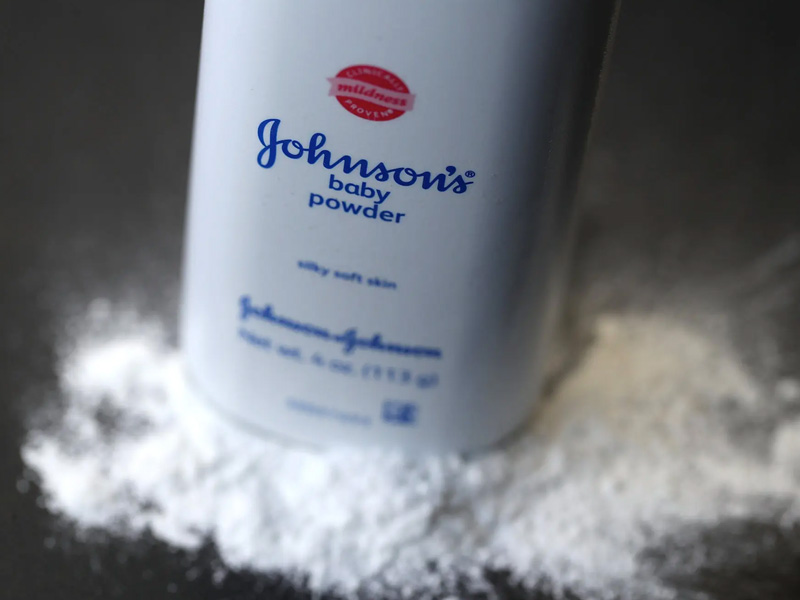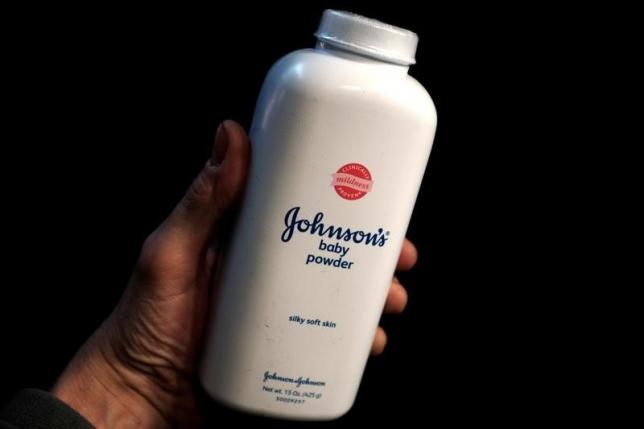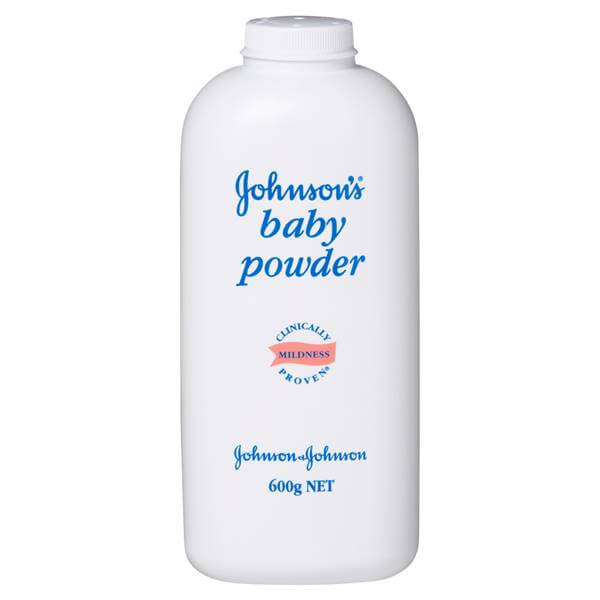Did You Develop Cancer after Talcum Powder Use?
Ovarian cancer and mesothelioma have been linked to Johnson & Johnson’s popular talc-based Baby Powder products. Lawsuits allege Johson & Johnson should be held liable. If you or a loved one have been diagnosed with Ovarian cancer after Talcum Powder use, you may qualify to join the Talcum Powder Lawsuit.

Start My Talcom Powder Claim Now
talcum powder Lawsuit
Ovarian cancer and mesothelioma have been linked to Johnson & Johnson's popular talc-based Baby Powder products.
Talcum powder is a seemingly harmless over-the-counter product used by many consumers to prevent rashes and keep skin free of moisture. However, mounting research shows that Johnson & Johnson’s popular baby powder and Shower-to-Shower absorbent body powder, as well as all other talcum powder products on the market in the United States, may actually be tied to an increased risk of ovarian cancer in women who use the powders in their genital area for personal hygiene purposes. If you have used J&J talcum powder or another type of talc-based body powder, and you have since been diagnosed with a potentially life-threatening disease like ovarian cancer, contact a reputable attorney in your area to discuss your legal options. You may have grounds to file a product liability lawsuit against Johnson & Johnson, in order to seek fair and timely reimbursement for your losses.
Talcum Powder Alternatives for Feminine Hygiene
As talcum powder is applied, talc particles become airborne and, when inhaled, can cause coughing, wheezing and, in some cases, a condition called talcosis, characterized by acute or chronic lung irritation. Talc-based powders marketed as body powders or feminine hygiene products have also been linked to an increased risk of ovarian cancer and other major side effects in women, caused by the talc particles traveling through the vagina, into the uterus and along the fallopian tubes to the ovaries. As a result, many women and parents are seeking safer and effective alternatives to talcum powder for infants and personal hygiene purposes, including the following natural products:
- Cornstarch
- Arrowroot powder
- Corn flour
- Rice flour
- Baking soda
- Chickpea powder
- Oat flour
What is Talcum Powder?
A soft, white powder used in cosmetics, baby powders and personal hygiene products that may lead to ovarian cancer and other serious side effects in users.
According to the American Cancer Society, talcum powder is made from talc, a mineral composed mainly of the elements silicon, magnesium and oxygen. As a powder, talc absorbs moisture well and helps cut back on friction, which makes it a useful product for keeping skin dry and preventing rashes. Because of its benefits, talc is widely used in a variety of consumer products, including baby powder and adult body and facial powders. In its natural form, some talc may contain asbestos, a dangerous substance known to cause a deadly type of cancer called mesothelioma when inhaled or ingested. However, all home-use talcum powders in the United States have been asbestos-free since the use of asbestos was widely restricted in the 1970s.
Possible Side Effects Leading to a Talcum Powder Lawsuit
Ovarian cancer is a type of cancer that arises from the cells of the ovary, most commonly the lining cells of the ovary. Unfortunately, ovarian cancer symptoms are very vague and there are currently no good screening tests for the disease. The most common symptoms of ovarian cancer include:
- Fatigue
- Becoming full quickly
- Leg swelling
- Abdominal swelling
- Changes in bowel and bladder habits
- Shortness of breath
Link Between Talcum Powder and Ovarian Cancer Side Effects
Although talc that contains asbestos is no longer available on the market, new research indicates that individuals who use talcum powder may still be at risk for cancer, namely ovarian cancer in women. Most concerns about a potential link between talcum powder and cancer involve women who regularly applied talcum powder to their genital area and who may now face an increased risk of ovarian cancer. Studies have suggested that talcum powder might play a role in the development of ovarian cancer if the powder particles (applied to the genital area, or on condoms, sanitary napkins or diaphragms) travel through the vagina, uterus and fallopian tubes to the ovaries. Numerous studies have examined the possible connection between talcum powder and ovarian cancer, and a federal jury in South Dakota ruled in October 2013 that a woman’s use of Johnson & Johnson products that contained talcum over the course of 30 years contributed to her ovarian cancer.
Lawsuits Against Talcum Powder for Ovarian Cancer and Other Injuries
FDA, Talc Powder and Side Effects
Talcum Powder Side Effect Studies
Why We Think J&J Should Be Held Liable for Talc Ovarian Cancer Injuries
At least 20 studies have shown that women who used talcum powder in their groin area are more likely to develop ovarian cancer, and even the American Cancer Society warns that “it has been suggested that talcum powder might cause cancer in the ovaries if the powder particles (applied to the genital area or on sanitary napkins, diaphragms, or condoms) were to travel through the vagina, uterus, and fallopian tubes to the ovary.” In an August 1992 article published in the New York Times, Johnson & Johnson admits that frequent genital dusting with talcum powder increases the risk of ovarian cancer by threefold. As a result, lawsuits filed over ovarian cancer and other injuries potentially linked to the use of talcum powder allege that J&J:
- Manufactured and sold a defective and unreasonably dangerous product
- Knew about the potential for its talc-based products to cause ovarian cancer
- Failed to provide consumers with adequate warnings about the risk of ovarian cancer from talcum powder
- Concealed information about the health risks of using talcum powder for personal hygiene purposes
- Exposed consumers to unnecessary harm from its talc-based baby powders and body powders
Related Topics

Start My Talcum Powder Lawsuit Claim Now

What should you do? If you have been diagnosed with ovarian cancer, you should contact a lawyer as soon as possible to discuss filing a talcum powder cancer lawsuit.
Start Your Claim Now!
The potential connection between talcum powder and ovarian cancer has long been documented, with the earliest talcum powder cancer studies dating back decades. Despite this seemingly obvious public health risk, federal regulators have yet to issue a formal warning on the labels of talc-based baby powders, notifying consumers about the potential for the products to cause ovarian cancer side effects. If you believe you have been adversely affected by side effects of Johnson & Johnson talcum powder, such as ovarian cancer, our consumer advocates at the Consumer Justice Foundation can help. We are dedicated to protecting the rights of consumers harmed by defective or dangerous products, and can help put you in touch with a qualified lawyer who has experience handling talcum powder cancer cases.
- Fight to Get The Compensation You Deserve
- Experienced Talcum Powder Attorneys Within Reach



